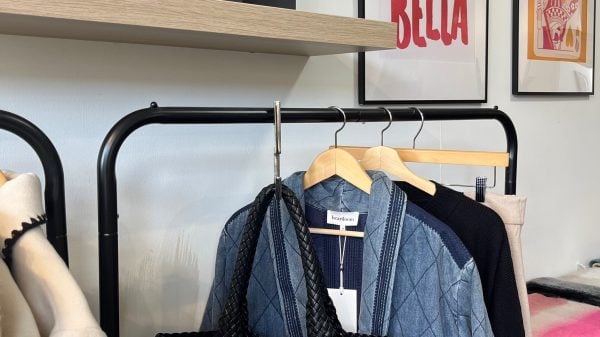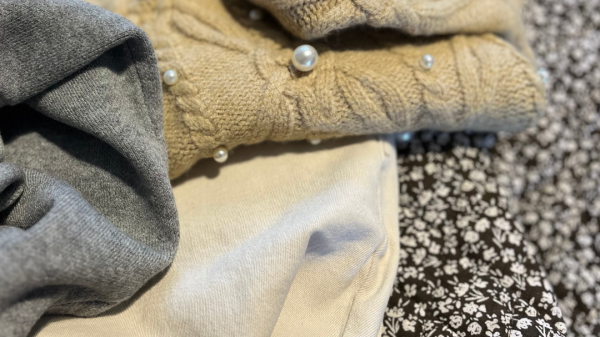Fast fashion has evolved into a mainstay of the global fashion industry resulting in consumers demanding fast, cheap, ever changing options from retailers. There are three emerging technologies that fast fashion brands can adopt to improve the environmental sustainability of their manufacturing processes while realigning their business practices to support a digital first, remote work environment.
New technologies available to fast fashion brands include the adoption of virtual prototyping software, adopting the use of biometric body data to develop fit algorithms, and incorporating 3D printing for prototyping and production.
Virtual Prototyping Software
The digitization of apparel design through virtual prototyping software allows fashion designers to visualize virtually and experiment easily with a variety of fabrics and patterns, on a 3D virtual mannequin before the actual garment is manufactured. This reduces resource waste associated with producing and shipping physical prototypes between manufacturing partners during the design and sampling process.
The adoption of virtual prototyping software also reduces the costs associated with prototype production since the need to continuously produce and ship ongoing iterations of prototypes between designers and manufacturers is eliminated. We also see an increased speed to market since designers and manufacturers can work collaboratively and remotely on a real-time digital platform and increased quality of a single, final prototype which has been digitally refined to exacting detail.

Photo: Unsplash
Case Example: In the early 2010’s, American department store and fast fashion retailer Target incorporated the use of 3D virtual prototyping software Optitex into their apparel design process. While adoption of the technology faced initial resistance from the apparel design team, ongoing improvements to the software’s graphics, fabric-drape visualization and texture eventually lead to a full-scale adoption of the technology by the retailer. By 2015, the positive financial and environmental impacts of adopting 3D virtual prototyping software were apparent, with sampling reduced by 65% and product development speeds increased by two weeks.
Biometric Fit Algorithms
A preventable source of waste generated by the fast fashion industry is the disposal of apparel that was not purchased by consumers due to fit or sizing issues. The adoption of biometric body data to develop fit algorithms for use by apparel designers removes the uncertainty inherent in sizing production and can contribute to a reduction in a retailer’s return rate.
Optimizing production sizes allows fast fashion manufacturers to produce apparel in a size range based on fit data analyzed on a regional and store level. This is particularly valuable for multi-national retailers serving clients with different size and fit requirements specific to geographic regions.

Photo: Unsplash
Case Example: While fast fashion retailers have been slow to adopt biometric fit algorithms in their design process, direct to consumer brand MTailor has built an ecommerce business based on manufacturing custom apparel using biometric body data. MTailor customers use mobile phone cameras to capture their 3D body scan. This data is the submitted to MTailor through a mobile app to provide the fit dimensions needed to create custom apparel. The application of this technology at an individual consumer level represents an opportunity for fast fashion manufacturers to adopt the use of biometric data at a regional level for size and fit insights to inform their apparel production processes.
3D Printing
3D printing presents an opportunity to reshape the existing manufacturing processes by altering the geographic span and density of global value chains. The environmental resources required to ship products from a distributed manufacturing facility to the point of consumption can be reduced by utilizing 3D printing for localized production at the point of consumption. The waste of resources required over the course of production, such as water and energy, can also be reduced since the scale of mass customization at the individual consumer level will eliminate the need for mass production of generic goods to meet a broad range of possible consumer preferences and sizes.
Key factors used to predict whether 3D printing will be a disruptive force in a given industry include the type of materials available, the need for customization and a need for speedy delivery. The fashion industry as a whole has been slow to adopt 3D printing for apparel production due to a shortage of materials that could be used for wearable apparel. The introduction of synthetic materials (such as nylon) however, represents an opportunity for the fast fashion industry to explore early adoption of the technology
There is an inherent need for customization in apparel to address a broad range of body types and fit requirements, which is currently addressed through a combination of standard size runs and tailoring, and a high level of returns or disposal of garments that do not fit. The fashion industry also displays a need for speedy delivery of manufactured goods, particularly in fast fashion which is defined by short sales cycles. The apparel industry is well positioned to embrace 3D printing, therefore providing fast fashion brands with a new technological opportunity through which to pursue environmental sustainability.

Photo: Unsplash
Case Example: Canadian jewellery brand Danial Christian Tang was able to leverage 3D printing to implement a local ‘just in time’ manufacturing process. The direct to consumer brand utilizes a high resolution to wax 3D printer to create a mold for each jewellery piece. The wax is then melted out of the mold and the desired precious metals are injected into it to create a bracelet, ring, earrings or necklace. This process allows the brand to locally produce each piece on a per-order basis, eliminating waste generated through excess product, shipping and overstock.
While a silver bullet solution does not exist to address the unsustainable environmental impacts of fast fashion, there are a number of new technologies that brands and manufactures can incorporate to minimize the level of waste inherent in the industry.
Consumer shopping habits will ultimately need to change over time in order for the fashion industry to shift away from a high consumption and high turnover model. However, in the short term, adoption of 3D virtual prototyping, biometric fit algorithms, and 3D printing provides companies with financially viable options to reduce the environmental impact of their existing production processes.










You must be logged in to post a comment Login